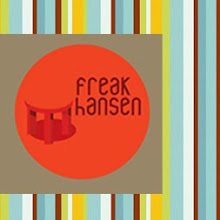Artist: Hoffmann, Josef (1870-1956)
Title: Fruit Bowl, c. 1904 (Franz Wittman KG, Austria)
Location: Museum of Modern Art (MoMA)
City: New York
Country: USA
Period/Style: Secession Movement
Genre: Design
Note: Painted metal. h. 3 3/4 (9.5cm); diam. 8 1/2 (21.6cm). Philip Johnson Fund. Acc. num. 459.1974
Credits:Digital image, The Museum of Modern Art, New York/Scala, Florence
Austria 1870 - 1956 TEXT BY DECOPEDIA
A leading member and founder of the Wiener Secession and Wiener Werkstätte, architect and designer Hoffmann was one of the most influential figures in the field in the early 20th century. He designed the Ver sacrum room at the first Wiener Secession exhibition in 1898. Hoffmann fell under the influence of British designers Charles Rennie Mackintosh and Charles Robert Ashbee, whose Guild of Handicraft proved an important stimulus for the establishment of the Wiener Werkstätte (Viennese Workshops) with designer Koloman Moser and industrialist Fritz Warndorfer in 1903. Between then and 1931 the Werkstätte produced furniture, metalware, and jewellery designs by Hoffmann, often characterized by qualities of geometry and rectilinearity. Hoffmann had begun teaching architecture at the Vienna School of Applied Arts in 1899, a post that he maintained until 1941. One of his most important commissions was the Palais Stoclet in Brussels (1905-11), for which he designed the whole ensemble from building through to interiors and furniture and worked alongside the distinguished Viennese artist Gustav Klimt and artist-designer Carl Otto Czeschka. He also designed furniture for the Thonet company including his Sitzmaschine (Sitting Machine) of 1908. Following on from the ideas of the Deutscher Werkbund established in 1907, Hoffmann founded the Austrian Werkbund in 1912 and headed it until 1920. He also designed the Austrian Pavilions at the 1914 Werkbund exhibition in Cologne, the 1925 Paris Exposition des Arts Décoratifs et Industriels, the 1930 Stockholm Exhibition, and the Venice Biennale of 1934.

